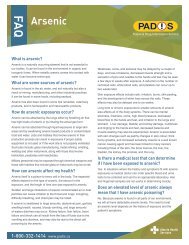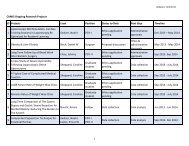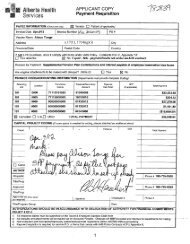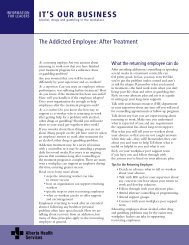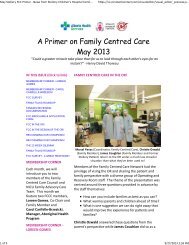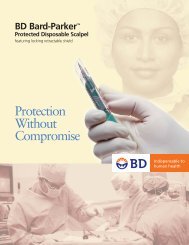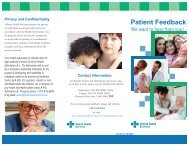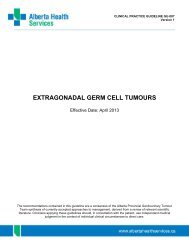Clinical Practice Guideline: Meningioma - Alberta Health Services
Clinical Practice Guideline: Meningioma - Alberta Health Services
Clinical Practice Guideline: Meningioma - Alberta Health Services
Create successful ePaper yourself
Turn your PDF publications into a flip-book with our unique Google optimized e-Paper software.
CLINICAL PRACTICE GUIDELINE CNS-005<br />
version 2<br />
BACKGROUND<br />
By the end of 2012, it is estimated that 2800 new cases of central nervous system (CNS) tumours will be<br />
diagnosed in Canada, and 1850 deaths from CNS tumours will occur during the same period. 1<br />
<strong>Meningioma</strong>s arise from the dural covering of the brain, and are estimated to account for 13 to 26 percent<br />
of all primary brain tumours, making them the second most common intracranial tumours reported in<br />
adults. 2-4 These typically slow-growing tumours occur most frequently after the fifth decade of life, and<br />
affect women almost twice as often as men. 5 <strong>Clinical</strong>ly, meningiomas present with symptoms causing focal<br />
or generalized seizure disorders, focal neurological deficits, or neuropsychological decline; though many<br />
asymptomatic meningiomas are only discovered incidentally during a CT or MRI scan for unrelated<br />
symptoms. 5,6<br />
The World <strong>Health</strong> Organization (WHO) classification system divides meningiomas into three grades based<br />
on histological and pathological characteristics: 7 grade I meningiomas account for as many as 90 percent<br />
of all cases, and are typically benign, grade II or atypical meningiomas account for 5 to 7 percent of cases,<br />
and grade III or anaplastic meningiomas account for 1 to 3 percent of cases. 3,5,7 The development of highgrade<br />
meningiomas has been correlated with exposure to ionizing radiation: the majority of patients with<br />
radiation-induced meningiomas either have a history of low-dose radiation to the scalp for tinea capitis, or<br />
received high-dose radiation for primary brain tumours between 20 and 35 years previous. 8,9<br />
The management of a patient with a meningioma will depend on the signs and symptoms produced by the<br />
tumour, the age of the patient, and location and size of the tumour. 5<br />
GUIDELINE QUESTIONS<br />
• What is the optimal treatment for adult patients with low-grade (WHO grade I) meningiomas?<br />
• What are the optimal treatment strategies for adult patients with atypical (WHO grade II) and<br />
anaplastic (WHO grade III) meningiomas?<br />
DEVELOPMENT AND REVISION HISTORY<br />
This guideline was reviewed and endorsed by the <strong>Alberta</strong> Provincial CNS Tumour Team. Members of the<br />
<strong>Alberta</strong> Provincial CNS Tumour Team include medical oncologists, radiation oncologists, neurosurgeons,<br />
neurologists, nurses, neuropathologists, and pharmacists. Evidence was selected and reviewed by a<br />
working group comprised of members from the <strong>Alberta</strong> Provincial CNS Tumour Team and a Knowledge<br />
Management Specialist from the <strong>Guideline</strong> Utilization Resource Unit. A detailed description of the<br />
methodology followed during the guideline development process can be found in the <strong>Guideline</strong> Utilization<br />
Resource Unit Handbook.<br />
This guideline was originally developed in November, 2009 and was updated in June, 2012.<br />
SEARCH STRATEGY<br />
For the 2012 update of this guideline, medical journal articles were searched using the Medline (2009 to<br />
June 18, 2012), EMBASE (2009 to June 18, 2012), the Cochrane Database of Systematic Reviews (2 nd<br />
Quarter, 2012), and PubMed electronic databases; the references and bibliographies of articles identified<br />
through these searches were scanned for additional sources. The search terms included: <strong>Meningioma</strong><br />
[MeSH heading], Meningeal Neoplasms [MeSH heading], practice guidelines, systematic reviews, metaanalyses,<br />
randomized controlled trials, and clinical trials. Articles were excluded from the review if they:<br />
Page 2 of 7



